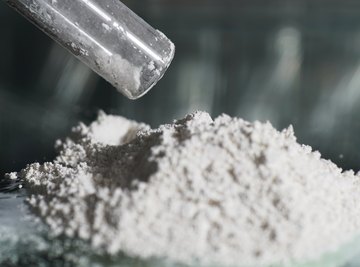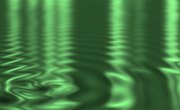
Potassium iodide (KI) is a commercially useful iodine compound that’s a solid white powder at room temperature. Iodine is an essential nutrient, and potassium iodide is the most common means of adding iodine to the diet of humans and animals. College students frequently extract iodine from potassium iodide as part of a chemistry experiment.
- Scale
- Potassium iodide
- Distilled water
- Hydrochloric acid
- Hydrogen peroxide
- Beaker
- Filter paper
- Funnel
- Vial
Pour 4 grams (g) of potassium iodide into a test tube. Add about 3 milliliters (ml) of distilled water to the test tube. Shake the test tube to dissolve the potassium iodide in the water.
Add 3 ml of concentrated hydrochloric acid (HCl) to the test tube. Shake the test tube again to mix the hydrochloric acid into the solution.
Obtain or prepare a solution of 97 percent water and 3 percent hydrogen peroxide. Add 20 ml of the hydrogen peroxide solution, and allow the solid iodine to settle to the bottom of the test tube.
Line the inside of a funnel with a piece of folded filter paper. Pour the solution from the test tube into the funnel so the solid collects on the filter paper. Rinse the solid from the test tube into the funnel with distilled water. Rinse the test tube as often as needed to get all the solid iodine onto the filter paper in the funnel.
Place the filter paper containing the solid iodine onto a flat surface until the solid iodine dries out. Place the iodine in a storage vial as soon as the iodine crystals are dry. You should obtain approximately 2 g of pure iodine.
Things You'll Need
References
About the Author
Allan Robinson has written numerous articles for various health and fitness sites. Robinson also has 15 years of experience as a software engineer and has extensive accreditation in software engineering. He holds a bachelor's degree with majors in biology and mathematics.
